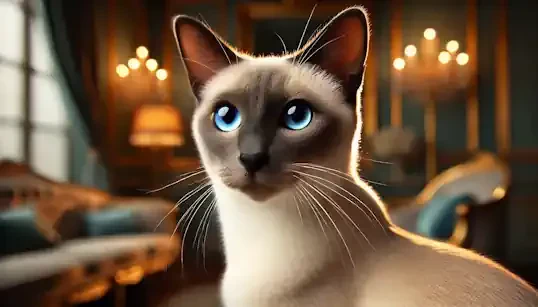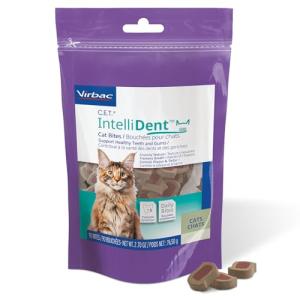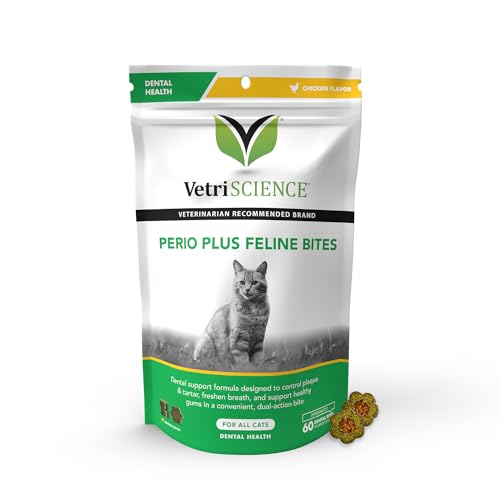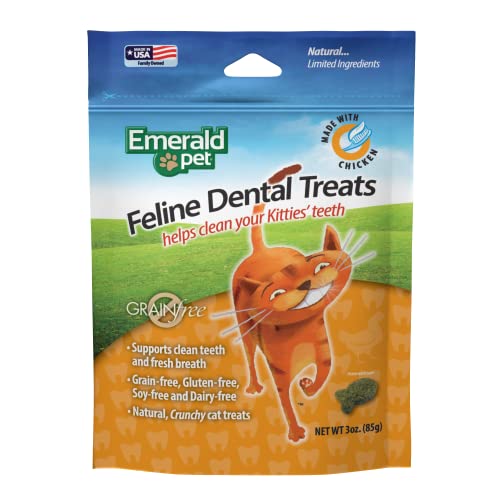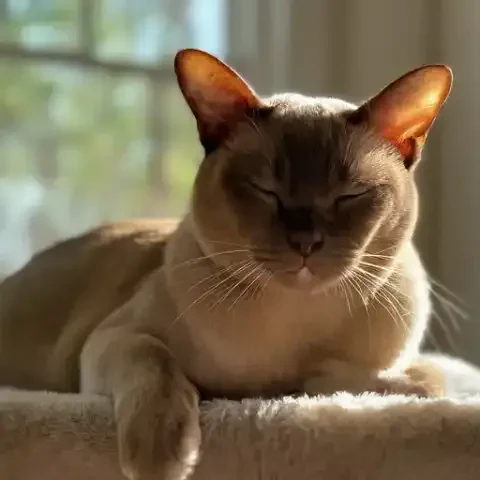Prepare to be enchanted by the "vocal virtuosos" of the cat world – Siamese cats! With their striking sapphire-blue almond-shaped eyes piercing through the distinctive mask of their pointed coloration, and a voice that can range from a gentle purr to a surprisingly robust "meow," the Siamese cat commands attention and affection in equal measure. These aren't just visually stunning felines; they are vibrant, intelligent, and utterly captivating companions renowned for their talkative personalities and unwavering devotion to their human families. Prepare to embark on a journey into the captivating world of Siamese cats, a comprehensive exploration of their unique charm, from their ancient origins and distinctive traits to essential care information and a collection of fun facts that will deepen your appreciation for these exceptional felines. Whether you're a seasoned cat enthusiast or simply curious about this iconic breed, this article will serve as your guide to understanding and celebrating the remarkable Siamese.
To truly grasp the allure of the Siamese, we must first delve into their rich history, tracing their lineage back to the kingdom of Siam, now modern-day Thailand. These cats are not a recent creation; their roots are deeply embedded in the ancient history of Southeast Asia. In their native land, they were known as "Wichien-maat," a name that translates to "moon diamond" or "moon gem," perfectly capturing their luminous eyes and precious status. For centuries, Siamese cats were revered in Siam, not as common street cats, but as treasured residents of royal palaces and sacred temples. They were considered symbols of good luck and were often depicted in ancient Siamese artwork and manuscripts, testaments to their esteemed position in society. It was not until the late 19th century that Siamese cats began to venture beyond the borders of Siam and into the Western world. The first Siamese cats are believed to have been gifted to the British Consul-General in Bangkok, Edward Blencowe Gould, in 1884, and shortly thereafter, a pair made their way to England, sparking immediate fascination and igniting the breed's popularity in the West. Their arrival in Europe and subsequently America caused a sensation. Their exotic appearance, unlike any European breeds at the time, and their distinctive personalities made them instant favorites among cat fanciers. Over time, the Siamese cat's appearance has subtly evolved, particularly in Western breeding programs. The "traditional" Siamese, sometimes called "apple-head" Siamese, retained a more rounded head and sturdier body build, closer to their original Thai counterparts. However, the "modern" Siamese, favored in show rings, developed a more elongated, wedge-shaped head and an even leaner, more angular body type, emphasizing their elegant and refined silhouette. Regardless of these subtle variations in physical form, the core essence of the Siamese – their pointed coloration, striking blue eyes, and undeniably talkative nature – has remained constant, continuing to captivate cat lovers worldwide.
Physically, the Siamese cat is a vision of elegance, defined by their slender, graceful lines and distinctive coloration. Their body type is often described as "oriental" or "foreign," reflecting their long and lean physique. They are the epitome of feline athleticism, exhibiting a naturally graceful and agile movement. They are not bulky or heavily built; instead, they possess a streamlined, muscular body that speaks to their active and energetic nature. The hallmark of the Siamese, of course, is their mesmerizing "pointed" coat pattern. This unique coloration is not simply a coat color but a fascinating example of temperature-sensitive albinism. The gene responsible for the pointed pattern is a form of albinism that is only expressed in cooler temperatures. This means that the Siamese cat's body, which is typically warmer, remains a lighter color, while the extremities – the "points" - ears, face mask, paws, and tail, which are naturally cooler, develop the darker pigmentation. This temperature sensitivity is why Siamese kittens are born almost entirely white or cream. As they grow and their bodies cool, the points gradually develop, becoming more defined and pronounced over time, a fascinating spectacle of nature unfolding. Adding to the allure of the pointed pattern is the variety of point colors. The traditional and foundational point colors of the Siamese breed are Seal point, displaying a rich dark brown to almost black point color; Chocolate point, with warmer milk chocolate brown points; Blue point, exhibiting cool grey-blue points; and Lilac point, the palest and most delicate grey points with a pinkish hue. Later, as the breed developed and broadened, other captivating point colors gained recognition, expanding the palette of Siamese beauty. These include Red or Flame point, displaying warm ginger points; Cream point, with soft creamy apricot points; Tortie point, a delightful mix of tortoiseshell patterns within the points; and Tabby or Lynx point, featuring tabby stripes within the points, adding intricate detail to their markings. Within each point color, there can also be variations in shade and intensity, adding to the diversity of the breed’s appearance. The Siamese coat itself, beyond its coloration, is also distinctive. It is short, fine, and glossy, lying close to the body, with minimal undercoat. This sleek coat contributes to their elegant silhouette and, as we'll discuss later, also makes them relatively low-maintenance in terms of grooming.
Beyond their coat, other distinctive features complete the Siamese cat's instantly recognizable look. Their eyes are perhaps their most striking feature – intensely bright blue, almond-shaped, and set at a slight slant. These sapphire eyes are a hallmark of the breed, captivating and mesmerizing, and a key element of their alluring expression. Their head is a distinctive wedge shape, long and tapering from the ears to a fine muzzle, contributing to their refined and sophisticated appearance. The ears are large and pointed, wide at the base and tapering to sharp tips, further accentuating the wedge-shaped head and adding to their alert and expressive demeanor. Finally, their tail is long and slender, tapering to a fine point, perfectly complementing their lean and graceful body lines. Taken together, these physical characteristics create a feline masterpiece – a cat of unparalleled elegance and striking beauty, instantly recognizable and forever captivating.
However, the captivating beauty of the Siamese cat is only matched, and perhaps even surpassed, by their incredibly vibrant and engaging personality. To truly know a Siamese is to understand their talkative nature. They are the undisputed "vocal virtuosos" of the feline world. Unlike many cats who communicate with subtle meows, Siamese cats are known for their extensive and varied vocal repertoire. They "talk" – and they talk a lot! Their vocalizations are not limited to simple meows; they encompass a wide range of sounds, from soft purrs and gentle chirps to insistent meows, demanding cries, and even surprisingly loud, almost howl-like vocalizations. But why are they so vocal? It's simply part of their communicative nature. Siamese cats are highly expressive and use their voices to communicate their needs, desires, opinions, and even simply to "chat" with their human companions. They are not shy about letting you know when they are hungry, want attention, are feeling playful, or simply want to express their presence. Living with a Siamese means embracing their vocal nature and appreciating their "conversations," even if they can sometimes be a bit… insistent!
One of the most fascinating aspects of Siamese cats is the science behind their colorpoint development – a truly remarkable example of genetics in action. As mentioned, the pointed pattern is a result of temperature-sensitive albinism. The enzyme responsible for producing pigment in their fur is heat-sensitive. It works effectively in cooler areas of the body but becomes inactive in warmer regions. This is why the points – ears, face, paws, and tail – which are naturally cooler extremities, develop the darker pigment, while the warmer body core remains lighter. This temperature sensitivity also means that the intensity of their point color can be influenced by ambient temperature. Siamese cats living in colder climates tend to have darker, more pronounced points, while those in warmer climates may exhibit lighter point coloration. It's a subtle and fascinating interplay between genetics and environment. Observing Siamese kittens as their points develop is a captivating process. Born almost entirely pale, the points gradually emerge over days and weeks as their bodies cool down, like a living work of art slowly being revealed. The progression of point development is a beautiful visual representation of their unique genetic makeup. Adding another layer to their captivating personalities, Siamese cats often exhibit "dog-like" personality traits that further endear them to their owners. Their loyalty is often compared to that of a dog. Siamese cats bond intensely with their families and are known for their unwavering devotion to their chosen humans. They often follow their owners from room to room, wanting to be involved in their activities and maintaining close physical proximity. Remarkably, some Siamese cats can even be trained to play fetch, enthusiastically retrieving toys and bringing them back for repeated throws, blurring the lines between feline and canine playfulness. This combination of loyalty, trainability, and eagerness to engage with their human families leads to the common comparison of Siamese cats to their canine counterparts, highlighting their exceptionally interactive and devoted nature.
Historically, Siamese cats were often associated with certain physical quirks that are less common today: cross-eyes and kinked tails. In early Siamese lineages, these traits were surprisingly frequent. The genetic link is believed to be intertwined with the pointed gene itself, or closely linked genes that were prevalent in the early breed lines. Cross-eyes, or convergent strabismus, was a noticeable trait in some Siamese, where their eyes turned inwards towards each other. Kinked tails, displaying a noticeable bend or hook, were also observed. However, through generations of selective breeding, dedicated breeders have largely eliminated these traits from modern Siamese cats. Breed standards now discourage cross-eyes and kinked tails, and breeders actively select against these traits. While selective breeding has been remarkably successful in minimizing these historical traits, occasional "throwbacks" can still occur. You might still encounter a Siamese with a slight kink in their tail or very mild strabismus, a subtle reminder of their breed's history, but these occurrences are now far less common than they once were. The striking appearance and captivating personalities of Siamese cats have also made them frequent stars in pop culture. Famous Siamese cats have graced the silver screen, pages of books, and cartoon frames, cementing their iconic status. Think of the mischievous Siamese cats Si and Am in Disney's Lady and the Tramp, or the clever feline detective in That Darn Cat! These are just a few examples of Siamese cats' recurring presence in popular media. Even outside of fiction, Siamese cats have been beloved companions of celebrities and historical figures, further adding to their glamorous image. Their visually striking appearance, with those piercing blue eyes and contrasting points, makes them inherently memorable and easily recognizable in film, animation, and other visual media.
Adding to their appeal, Siamese cats are generally a relatively long-lived breed. While individual lifespans vary, anecdotal evidence and breed history suggest that Siamese cats often enjoy long and healthy lives, frequently living well into their late teens or even early twenties. This longevity means years of companionship, affection, and engaging interactions with your Siamese friend. It is, however, important to remember that while breed traits offer a general framework, individual Siamese cats, like all living beings, possess distinct personalities. While certain traits like vocalness, sociability, and intelligence are common, the expression of these traits and other personality nuances can vary widely from cat to cat. Some Siamese may be more demanding of attention, constantly seeking interaction, while others might be slightly more independent and content with periods of solitary play. Some may be dedicated lap cats, always ready for a cuddle, while others are more active explorers, constantly investigating their surroundings. It's crucial to remember that each Siamese is an individual, and when considering welcoming one into your home, it's beneficial to consider not only the breed traits but also the specific personality of the individual cat you are choosing, ensuring a good match for your household and lifestyle.
Caring for a Siamese cat, while incredibly rewarding, is thankfully quite straightforward, especially when it comes to grooming their sleek and elegant coats. Grooming a Siamese is a breeze. Their short, fine coat is remarkably low-maintenance, requiring minimal grooming effort. Weekly brushing is typically sufficient to remove any loose hair and help maintain their coat's glossy shine. A simple rubber brush or a grooming mitt is perfectly adequate for this task. Bathing is generally not necessary unless your Siamese cat happens to get particularly dirty or into something messy. They are naturally clean and meticulous groomers themselves, taking pride in their sleek appearance. Standard cat grooming practices, such as nail trimming and ear cleaning, should be performed periodically, as needed, just like with any other cat breed. The ease of grooming is definitely a significant benefit of owning a Siamese cat, allowing you to spend more time enjoying their company and less time wrestling with grooming tools!
Feeding and nutrition are important aspects of Siamese cat care, particularly given their active nature. Provide your Siamese with high-quality cat food that is appropriate for their age (kitten, adult, senior), activity level, and lean body build. A protein-rich diet is especially important to support their energy levels and maintain their lean muscle mass. Portion control is essential to prevent obesity. Siamese cats can be prone to overeating if given unlimited access to food, and maintaining a healthy weight is crucial for their overall well-being and longevity. Always ensure fresh, clean water is readily available. Consider incorporating wet food into their diet in addition to dry food. Wet food can contribute to hydration, which is beneficial for all cats, and can also add variety and palatability to their meals. Exercise and playtime are non-negotiable for a Siamese cat. Daily playtime is absolutely crucial for their physical and mental well-being. Siamese cats are active and intelligent, and they thrive on stimulation. Provide a variety of interactive toys, puzzle toys that challenge their minds, feather wands for chasing, and cat trees for climbing and exploring vertical space. Engage in interactive play sessions with your Siamese cat daily. They thrive on attention and interaction with their human families, and playtime is an excellent way to bond and provide them with the exercise and mental stimulation they crave. If you live in a safe environment and your Siamese is amenable, consider leash training them for safe outdoor exploration. This can provide an enriching experience for adventurous Siamese cats, but only if done safely and with proper training and precautions. Health care for Siamese cats should be proactive and preventative. Regular veterinary check-ups and vaccinations are essential for maintaining their overall health. Parasite prevention, including flea, tick, and worm control, should be administered as recommended by your veterinarian. Dental care is particularly important for Siamese cats, as they can be prone to dental problems like gingivitis and periodontal disease. Regular teeth brushing, ideally daily, is highly recommended, along with professional dental cleanings as advised by your veterinarian. Be sure to discuss breed-specific health concerns with your veterinarian, such as asthma and mediastinal lymphoma, to be aware of potential risks and screening options. Consider pet insurance to help manage unexpected veterinary costs. Given the breed's predisposition to certain conditions, pet insurance can provide peace of mind and financial support should health issues arise. Creating a Siamese-friendly home environment is about catering to their active, social, and intelligent nature. Ensure your home is a safe indoor space, free from hazards and potential dangers. Provide comfortable and accessible resting spots throughout the house, including high perches, as Siamese are agile climbers and enjoy elevated vantage points. Litter box placement and hygiene are essential, providing enough litter boxes in accessible locations and scooping them daily. Scratching posts and vertical space, such as cat trees, are vital for their physical and mental well-being, allowing them to express natural behaviors and stay entertained. Provide plenty of toys and enrichment opportunities to keep them mentally stimulated and prevent boredom. Above all, a Siamese-friendly home is one where they will receive lots of attention and interaction. This is not a breed to be left alone for long periods; they thrive on companionship and need to be part of your daily life.
Before you decide to welcome a Siamese cat into your home, take an honest moment for self-assessment to determine if this breed truly aligns with your lifestyle and personality. The pros of Siamese ownership are abundant and compelling. They are intensely affectionate and devoted companions, forming incredibly strong bonds with their families. Their intelligence and trainability make them highly interactive and engaging pets. Their playful and entertaining personalities ensure there's never a dull moment in a Siamese household. Their strikingly beautiful and elegant appearance is a constant source of admiration. Their relatively low-maintenance grooming requirements are a practical bonus. And they are generally a healthy and long-lived breed, promising years of companionship. However, it's crucial to be equally aware of the potential cons. Their vocal nature is a defining characteristic, but their talkativeness can be overwhelming for some owners. Their demanding nature for attention means they need significant interaction and can become lonely and vocal if neglected. Their activity levels require daily playtime and mental stimulation to prevent boredom and destructive behaviors. They are predisposed to certain health issues, such as asthma and mediastinal lymphoma, requiring responsible care and awareness. And finally, their vocal and active nature might not be well-suited for very quiet or sedentary households seeking a more low-key feline companion. To assess your lifestyle compatibility, consider these questions: Can your household provide abundant attention, interaction, and playtime for an energetic cat? Do you appreciate vocal cats and enjoy "conversations" with your pets, or would excessive vocalization be overwhelming? Is your household active enough to keep up with their energy and intelligence? Are you prepared for potential health issues and committed to preventative care and regular veterinary check-ups? And are you seeking a deeply bonded, interactive feline companion, or would a more independent or aloof breed be a better fit? If you find yourself answering "yes" to most of these questions, then a Siamese cat might just be the vibrant and engaging companion you've been searching for.
Delving deeper into Siamese cat health, it's reassuring to know that they are generally considered a relatively healthy and long-lived breed. However, like all breeds, they do have certain predispositions to specific health conditions. Therefore, preventative care and regular veterinary check-ups are especially important for Siamese cats. Asthma, or bronchial disease, is unfortunately relatively common in Siamese cats. Asthma in cats, similar to humans, involves inflammation and constriction of the airways in the lungs, leading to breathing difficulties. Symptoms of feline asthma can include coughing, wheezing, rapid or labored breathing, and open-mouth breathing. Diagnosis typically involves veterinary examination, chest x-rays, and sometimes bronchoscopy. Management of feline asthma usually involves medications, such as corticosteroids and bronchodilators, often administered via inhalers, to control inflammation and open airways. Early detection and consistent veterinary care are crucial for managing feline asthma and ensuring a good quality of life. Mediastinal lymphoma is a type of cancer that Siamese cats have a higher predisposition to compared to some other breeds. Lymphoma is a cancer of the lymphocytes, a type of white blood cell, and mediastinal lymphoma specifically affects the lymph nodes in the chest (mediastinum). Symptoms of mediastinal lymphoma can be vague and may include loss of appetite, lethargy, weight loss, and respiratory distress. Diagnosis typically involves biopsies and imaging. Treatment options for lymphoma often include chemotherapy, and while not always curative, treatment can often extend lifespan and improve quality of life. Progressive Retinal Atrophy (PRA) is a genetic eye condition that can lead to progressive blindness in affected cats. PRA is an inherited condition, meaning it is passed down from parents to offspring. Genetic testing is available to identify cats carrying the gene for PRA. There is no cure for PRA, but cats with vision loss can adapt remarkably well to their surroundings, relying more on their other senses. Reputable breeders should screen their Siamese cats for PRA to minimize the occurrence of this condition in the breed. Hypertrophic Cardiomyopathy (HCM), a heart muscle thickening condition, is common in many cat breeds, and Siamese cats are also among those with a predisposition. Screening for HCM in Siamese cats is possible via echocardiogram, an ultrasound of the heart, allowing for early detection and management if the condition is present. Dental problems, such as gingivitis and periodontal disease, are another area of concern for Siamese cats. They can be more prone to dental issues than some other breeds. Regular dental care is therefore crucial, including daily teeth brushing and professional dental cleanings as recommended by your veterinarian, to maintain their oral health and prevent dental disease. While less common, hip dysplasia, a condition affecting the hip joint, and amyloidosis, a rare condition involving abnormal protein deposits in organs, have also been reported in Siamese cats as potential, though less frequent, health concerns. The importance of choosing reputable breeders who prioritize health and genetic screening is paramount when considering a Siamese kitten. Responsible breeders will health test their breeding cats for PRA and HCM, and ideally other relevant genetic conditions, and will be transparent about their health testing practices and the health history of their breeding lines. Inquire about health guarantees and health warranties to ensure you are choosing a kitten from a breeder who prioritizes the health and well-being of their cats.
When you are ready to find your Siamese companion, you have several avenues to explore, each with its own advantages and considerations. Reputable breeders offer the benefit of carefully selecting breeding cats for health and temperament, but it's crucial to choose responsibly, especially for Siamese, given their predispositions to certain health conditions. Responsible breeders will prioritize health testing, genetic screening, and early socialization. However, kittens from reputable breeders will typically come with a higher purchase price. Adoption offers a wonderfully rewarding alternative. Consider adopting a Siamese or Siamese mix from a shelter or rescue organization. Adult Siamese cats in shelters often have established personalities, making it easier to assess if their temperament is a good fit for your home. Adoption fees are generally lower than breeder prices, and you are giving a deserving cat a loving home. Siamese cats, both purebred and mixes, are sometimes surrendered to shelters or rescues, often due to their vocal nature or high energy levels – traits that are endearing to the right owner but may overwhelm others. When contacting breeders, health and temperament should be your primary focus. Ask breeders about health testing of parents for PRA, HCM, and other relevant genetic conditions. Request to see health testing documentation to verify their claims. Inquire about the health history of their lineage, and ask about the longevity of cats in their breeding lines. Discuss the temperament of their kittens and parent cats, and inquire about their socialization practices. If possible, visit the cattery to assess the living environment of kittens and parent cats firsthand and observe their conditions. Thoroughly inquire about breeder guarantees and health warranties they offer. Red flags to watch out for when choosing a Siamese breeder include breeders who are evasive or dismissive about health testing, cannot provide documentation, are unwilling to answer your questions, or refuse to allow visits to their cattery. Avoid breeders who raise kittens in unclean or neglectful environments, or those who seem primarily motivated by profit, selling kittens too young or at very low prices, which can indicate compromised health and care. Adoption remains a truly wonderful option. Adopting an adult Siamese or Siamese mix from a shelter or rescue allows you to provide a loving home for a cat in need, often at a lower cost. You can often find purebred Siamese, or Siamese mixes who clearly exhibit Siamese traits, in shelters or breed-specific rescues. Be open to considering Siamese mixes; they can still embody the wonderful personality traits of the breed and desperately need loving homes.
Venturing beyond the basics, there are even more delightful facets to the Siamese cat experience. Siamese kittens are undeniably tiny talkers, their vocalizations starting early in life, with little meows and chirps emerging from a very young age. Kitten development stages in Siamese are fascinating to observe as their points develop and their distinctive personalities begin to blossom early on. Socialization is incredibly important for Siamese kittens, shaping their naturally social and people-oriented personalities. The kitten stage is, as with all kittens, filled with playful antics and endearing mischief – cherish this time of boundless energy and adorable discoveries! Siamese cats are generally known to be social butterflies, often getting along well with other pets, particularly other cats, especially when raised together. They can also often coexist peacefully with cat-friendly dogs, given proper introduction and socialization. Their inherently social nature often means they enjoy having feline or canine companions, providing them with additional outlets for play and interaction when their human families are occupied. Always supervise initial introductions to new pets and ensure there are adequate resources for all animals in the household, such as separate food bowls, water sources, litter boxes, and resting areas, to minimize stress and ensure harmonious coexistence. Perhaps one of the most endearing quirks of Siamese cats is their tendency to become true "shadows" to their owners. They are known for following their humans around the house, room to room, wanting to be involved in everything you do. They crave companionship and enjoy being part of your daily activities, whether it's "helping" with chores, supervising your work at a computer, or simply being in close proximity as you relax. Their deep attachment to their families and their constant desire for companionship are hallmarks of the Siamese bond, making them truly devoted and ever-present members of the household.
In conclusion, the Siamese cat is a breed of vibrant contrasts – strikingly beautiful yet endearingly playful, elegantly slender yet possessing a robust voice, demanding of attention yet deeply devoted in their affection. Their key traits – their mesmerizing pointed appearance, their remarkably vocal and social personality, their keen intelligence and playful spirit – create a truly unique and unforgettable feline companion. However, responsible Siamese ownership necessitates a full understanding of their breed characteristics, including their vocal nature, their need for attention, their activity levels, and awareness of potential health considerations. The joys and rewards of Siamese companionship are immeasurable for the right owner. Their loving and devoted nature, their entertaining personalities, and the deep bond they forge with their families bring unparalleled vibrancy, energy, and feline charm into the lives of those who welcome them. If you are ready for a vocal, interactive, and exceptionally devoted feline companion, and are prepared to provide them with the attention, care, and understanding they need, a Siamese cat may be the perfect breed to fill your life with endless feline joy and spirited companionship. Take the time to research further, connect with reputable breeders or shelters, and thoughtfully consider if your home and heart are truly ready to embrace the captivating spirit of the Siamese cat.
